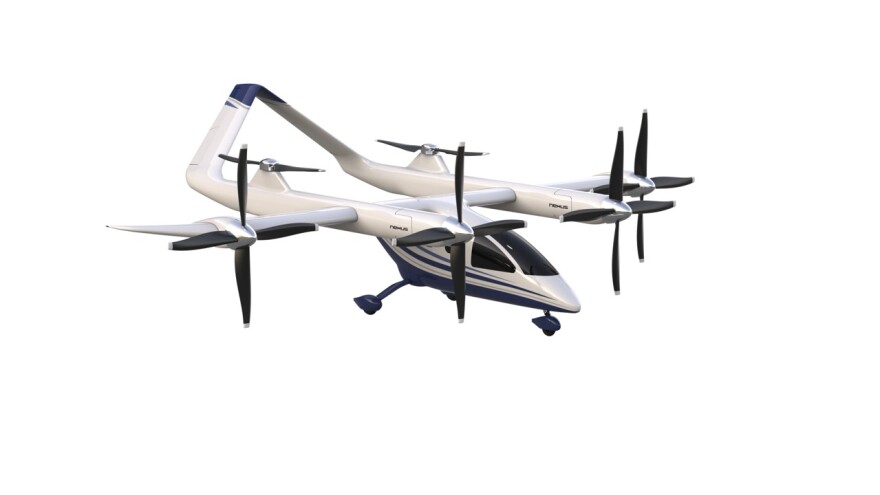Cessna and Beechcraft have been at the forefront of general aviation for nearly 100 years.
The two Wichita companies are now part of Textron, and it makes sense that as aviation enters a new phase, they would be leaders in that as well.
Electric aircraft are the next frontier for general aviation. And Textron hopes to pour the decades of experience Cessna and Beechcraft have in designing, building and certifying new aircraft into that industry segment.
Textron created a new e-aviation division in 2020. Two years later, it bought the Slovenian company Pipistrel, which makes electric airplanes and drones.
Textron eAviation is currently developing its own electric aircraft, the Nexus, in Wichita.
"If you think of about companies like Cessna, like Beechcraft — which have become Textron Aviation — those are the companies who have really been the leaders in the general aviation space," said Kriya Shortt, president and CEO of Textron eAviation. "And as we think about general aviation and business aviation's commitment to a carbon neutral, zero-emission environment by 2020 … it seems to make all the sense in the world that Textron would be at the forefront of that as well."
Ben Goldstein covers e-aviation for the trade publication Aviation Week. He said making flying more environmentally friendly is one of the key factors driving e-aviation, which some analysts say could grow into a $30 billion industry by the end of the decade.

"Everyone recognizes and understands that aviation needs to be more sustainable, they need to bring down its carbon footprint," Goldstein said. "And there's a lot of pressure politically … especially in Europe, there's a whole political movement about decarbonizing aviation."
To accomplish that, e-aviation will have to figure out the same challenge the auto industry struggled with when it introduced electric cars: batteries.
"Battery technology needs to continue to mature because … there is a weight component to that," said Textron eAviation's Shortt. "And we do have to be able to have a useful load that makes … commercial viability of the product.
"So not only do you have to be able to carry what you need to carry, or want to carry, and go the the duration that you want to because you can't just pull over to the side of the road and charge."
Current battery capacity limits how far electric aircraft can fly and how much they can carry. Pipistrel, which has about 300 employees at facilities in Slovenia and Italy, makes the Velus, a two-seat electric plane. But its range is only about 50 minutes between charges.
Despite that, Shortt said there's still a place in the market for e-aviation aircraft. That could be as an air ambulance, to help with disaster response, routing passengers between major airports, acting as an air taxi or delivering packages.
Pipistrel has developed a hybrid-electric cargo drone called the Nuuva V300. The unmanned vertical takeoff vehicle can carry more than 600 pounds of cargo up to nearly 200 miles.

"We all are consumers of Amazon, right?" Shortt said. "So, how do we think about continuing to find ways to be more sustainable in that space? We believe the Nuuva has a good runway for that."
In addition to cargo, Aviation Week's Goldstein thinks the air taxi option holds the most promise for the industry. The formal name is urban air mobility and it would use electric vertical take-off and landing aircraft, known as eVTOLs.
"Maybe it takes one hour in traffic to get from downtown Los Angeles to LAX airport," Goldstein said. "But with one of these eVTOLs — if you have a little vertiport set up downtown and another one set up next to the airport — you could maybe take that one-hour commute and do it in 15 minutes, just a clear shot."
Goldstein said the Federal Aviation Administration would like to see urban air taxis operating by the 2028 Summer Olympic Games, which are scheduled for Los Angeles.
"The FAA is very much committed to making this goal a reality, and they want to see the United States hold on to its leadership position in this new advanced air mobility industry," Goldstein said.
The Nexus that the 50 employees at Textron eAviation are building would fit that market. It looks a bit like an oversized drone, with seating for three people plus a pilot.

It can travel up to 140 miles per hour and has a range of about 115 miles. It's currently undergoing testing in a wind tunnel.
"We all are very familiar with the Uber concept," said Textron's Shortt. "We see it less as an Uber kind of construct and more of a scheduled routing type of augmentation that will reduce … the time involved with getting from point A to point B.
"And it will do so in a very sustainable way because it is all electric."
Textron is among hundreds of companies globally moving into e-aviation.
Goldstein said that includes everyone from startups to aviation giants like Boeing and Airbus.
"I really think that the technology has progressed to a point, combined with the political motivation to reduce the carbon footprint of aviation, which has created a kind of perfect storm," he said.
"There's almost a little bit of a mania, where everyone is competing to try and establish a foothold in this new space."


